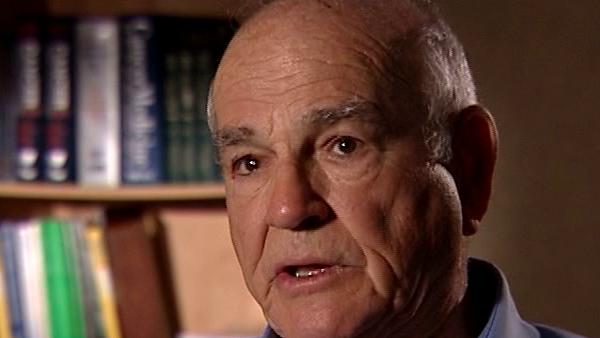NEXT STORY

Developing a radioimmunoassay method for testing viruses
RELATED STORIES

NEXT STORY

Developing a radioimmunoassay method for testing viruses
RELATED STORIES



We decided one of the best things we could do to move this forward was to distribute the reagents to everybody who would… who could use them, and once you had the antibody from a transfused person and the antigen, you could find your own antigens and antibodies very easily. So we decided, we hired a… a person to package the stuff and send it off when people wanted it and within a very short time, many people had done the study. You essentially didn't need any equipment, just the, you know, glass plate and some agar and a… and a dye, you know, to cut the patterns in the agar, and as a consequence, within a very short time there was... there was much confirmation of it, so the, the concept was accepted, you know, fairly reasonably quickly. Given how... well, there was initially a lot of skepticism about our finding and… and one of the first papers we published, in which we in effect made the claim that, or we supported the hypothesis, it was rejected by the journal. Well, what we didn't do was get mad because that wouldn't, you know, and start some kind of fuss about it, because we sort of, we'd learned that somebody doesn't agree with you, there's no point arguing about it. What you do is collect more data until there's not much of an argument.
Well, we had one interesting experience. We had not worked at the hepatitis field and there was, you know, a substantial number of senior and experienced investigators who had been using, I suppose what you'd call conventional virological methods to identify the virus and of course we weren't doing that at all, this was a finding that we hadn't anticipated but when… when we saw it we were prepared to accept, you know, to study it. But in any case, so we had a meeting once and Dr Sutnik, Al Sutnik, who was in our team was talking to one of the experts and the fellow said, ‘You know, I have to say that we in the kind of hepatitis community are pretty irritated with you’, or words to that effect and he said, 'You know, we have been working on this thing for a long time and suddenly you come in from nowhere and you make this, looks like substantiated claim, you've found the hepatitis virus’. So Al's response was, ‘You'll get over it’. Which is what happened. But what we decided not to do was make any kind of controversy. And what, that… that was one of the, you know, of all people, Darwin was — who started some of the greatest controversies in biology — did not personally get into controversies because his mentor, you know, was the geologist, Lyle and Lyle had written to him once and he said, look, don't get into arguments, you'll only spend... waste a lot of energy. It really doesn't do much good. Good piece of advice.
American research physician Baruch Blumberg (1925-2011) was co-recipient of the Nobel Prize in Physiology or Medicine in 1976 along with D Carleton Gajdusek for their work on the origins and spread of infectious viral diseases that led to the discovery of the hepatitis B virus. Blumberg’s work covered many areas including clinical research, epidemiology, virology, genetics and anthropology.
Title: How to avoid an argument
Listeners: Rebecca Blanchard
Dr Rebecca Blanchard is Director of Clinical Pharmacology at Merck & Co., Inc. in Upper Gwynedd, Pennsylvania. Her education includes a BSc in Pharmacy from Albany College of Pharmacy and a PhD in Pharmaceutical Chemistry from the University of Utah in Salt Lake City. While at Utah, she studied in the laboratories of Dr Raymond Galinsky and Dr Michael Franklin with an emphasis on drug metabolism pathways. After receiving her PhD, Dr Blanchard completed postdoctoral studies with Dr Richard Weinshilboum at the Mayo Clinic with a focus on human pharmacogenetics. While at Mayo, she cloned the human sulfotransferase gene SULT1A1 and identified and functionally characterized common genetic polymorphisms in the SULT1A1 gene. From 1998 to 2004 Dr Blanchard was an Assistant Professor at Fox Chase Cancer Center in Philadelphia. In 2005 she joined the Clinical Pharmacology Department at Merck & Co., Inc. where her work today continues in the early and late development of several novel drugs. At Merck, she has contributed as Clinical Pharmacology Representative on CGRP, Renin, Losartan, Lurasidone and TRPV1 programs and serves as chair of the TRPV1 development team. Dr Blanchard is also Co-chair of the Neurology Pharmacogenomics Working Group at Merck. Nationally, she has served the American Society of Clinical Pharmacology and Therapeutics on the Strategic Task Force and the Board of Directors. Dr Blanchard has also served on NIH study sections, and several Foundation Scientific Advisory Boards.
Tags: Al Sutnik
Duration: 3 minutes, 10 seconds
Date story recorded: September 2007
Date story went live: 28 September 2009